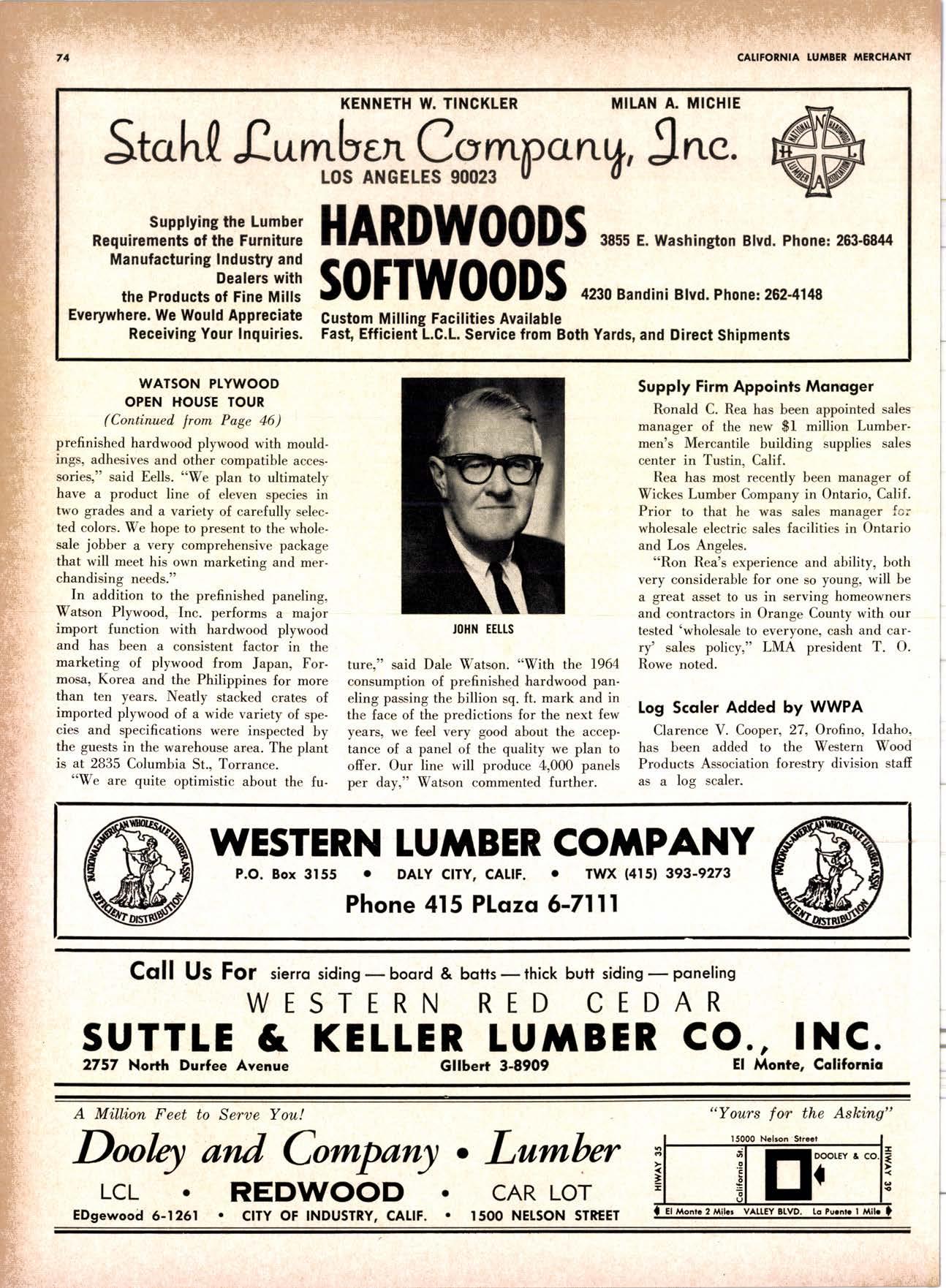
2 minute read
Here's Hswq,ii
By PUT ROBBINS Executive Director, Hawaiian Wood Products Association
fN OUR LAST article we mentioned thar r due to high population density on a limited space, and resulting high land and land development costs, housing in Hawaii is expensive. In any discussion of business in Hawaii there are a number of other factors which are pertinent and inte-resting.
Hawaii is a land of many peoples and races living together in harmony under what we refer to as the ooaloha spirit." This is no empty promotional gimmick. You don't have to be in Hawaii very long to realize that ooaloha" is more than just a greeting to newcomers or an unusual word described in travel folders. Aloha is a hard word to define, it means so much and can be appropriately used so many ways. I like to think of aloha as relating to the Golden Rule, and the attempt to inject this feeling into everyday life.
To a Mainland Haole (Caucasian)" aloha and the racial mix are generally new experiences. The Haole is a minority, though the largest single group in Hawaii, representing slightly under one-third of the entire population.
I mention this not for any racial reasons, but for its business implications.
The majority of Hawaii's homebuilders are second and third generation Americans of Japanese ancestry. The parents of many of these people came to Hawaii to work in the sugar plantations, others as merchants and professional people connected with the plantations. After working in the building trades they sought managem€nt help and credit from the building supply houses and became general contractors and,/or homebuilders. Thus to this time there is a very close relationship between building contractor and lumber dealer.
Whil; there is a State Contractors Association and Homebuilders Association, each supply house,/lumber dealer has a private contractor's association consisting of tohis boys." These groups generally have regular meetings, monthly golf tournaments and bowling leagues. Some builders belong to two or three of these company associations as well as the others.
While this close relationship and aloha spirit is wonderful to behold and nice to experience it frustrates the efiorts of anyone promoting new methods, ideas and products. My experience on the Mainland lead me to cynically state that you can sell anything to the homebuilder as long as it has a gaudy label stating that it is "new and difierent," and will Save 501 per thousand, in-place cost. Here just about any 'onew" product is suspect, even if it has been used for years on the Mainland.
Probably 2 in 5 people from the homebuilding and supply industry have ever in their adult lives been out of the State of Hawaii. Until jet transpodation this ratio was even lower. With their backeround and separated by 2500 miles of waier it's not difficult to realize why most of the building products' salesmen, building foremen, and workers in all trades have never left their "own little island" and find it very difficult to accept new ideas.
The concrete and cement products' industry in Hawaii is Iess than 5 years old. Production potential for the two cement plants is three million barrels a year yet current production has been at the rate of 1.2 million barrels per year. And cement products technology and engineering is as advanced in Hawaii as anyplace in the entire world. I1 you were to [sk me to show you a wood frame apartment building which has been completed within the past two vears I could not do it.
Next month I'll report on what is being done to improve wood products marketing and promotion in Hawaii.











